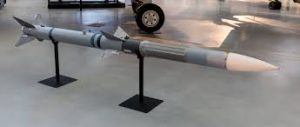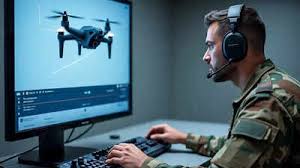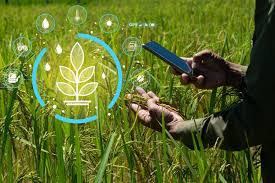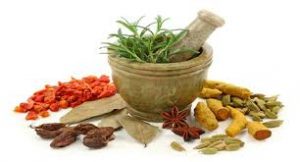Today’s Current Affairs:11th October 2025 for UPSC IAS exams, State PSC exams, SSC CGL, State SSC, RRB, Railways, Banking Exam & IBPS, etc
Table of Contents
Surrogacy (Regulation) Act, 2021: In News

The Supreme Court recently ruled that the age limits under the Surrogacy (Regulation) Act, 2021, do not apply to couples who had frozen their embryos and initiated the surrogacy process before the law came into force on January 25, 2022.
- In India, surrogacy is regulated by the Surrogacy Regulation Act, 2021.
- This act prohibits commercial surrogacy.
- The object of this Act is to prevent the exploitation of the women who may be lured into the arrangements of the commercial surrogacy.
- Under the provisions of the Act altruistic surrogacy is permitted whereby the surrogate mother is required to carry the child to help another individual or couple without receiving the monetary benefit other than medical and insurance expenses.
- It provides for the prohibition and regulation of surrogacy clinics. It states that “No Surrogacy Clinic shall conduct or associate with or assist in the performance of the activities relating to the surrogacy and surrogacy procedures unless such clinic has been registered under this Act”.
- It prohibits any person or entity, including the surrogacy clinic, paediatrician, gynaecologist, embryologist, or even the registered medical practitioner to engage in any form of the commercial surrogacy practices.
- It further prohibits the abortion during the period of the surrogacy without the written consent of the surrogate mother and the registered medical practitioner, including the gynaecologist, paediatrician, and embryologist.
- Surrogacy procedures shall not be performed or initiated unless the certificate of essentiality is obtained by the intended couple.
- It provides that a surrogate must be a woman who has been married and has at least one child of her own.
- She must be between the age of 25 -35 years on the date of implantation.
- The surrogate mother should refrain from providing her own gametes and from acting as a surrogate mother more than once.
- It states that the intended couple must be married.
- The women must be between the age of 23-50 years, and the man must be between the age of 26-55 years on the date of the certification.
- Intended partners must have been married for the period of 5 years and must be nationals of India.
- Further it states that the intended couple should not have any surviving children, whether biologically or through adoption or from any earlier surrogacy procedures.
- “A child born out of the surrogacy procedure shall be deemed to be the biological child of the intended couple and shall be entitled to all the rights and privileges which are available to the natural child.
AIM-120 AMRAAM Missile:

After sending its first consignment of mineral samples to Washington under a rare earths deal, Pakistan may soon receive the AIM-120 Advanced Medium-Range Air-to-Air Missiles (AMRAAM) from the United States.
- The AIM-120 Advanced Medium-Range Air-to-Air Missile (AMRAAM) is an active, radar-guided, medium-range, air-to-air missile.
- It is among the most widely used beyond-visual-range (BVR) air combat weapons in the world.
- Developed in the US in the late 1970s and 1980s, it became operational in 1991 with the US Air Force, replacing older radar-guided missiles.
- The AIM-120 is employed by over 35 countries, including key U.S. allies in NATO, the Asia-Pacific region, and the Middle East.
- Notable users include the United States, United Kingdom, Japan, Australia, and several NATO member countries.
- From American F-15s, F-16s, and F-35s to European aircraft like the Typhoon and Gripen, it is installed on a wide variety of fighter jets.
- It is powered by a solid-fuel rocket motor capable of propelling it to speeds exceeding Mach 4, or roughly 3,000 miles per hour.
- The missile can be launched in all weather, day or night.
- It has a “fire-and-forget” capability, which allows the missile to be fired over long distances and manoeuvre without a radar lock.
- The missile uses the onboard radar to track and follow the target, freeing the pilot from having to keep it guided.
- It has a range exceeding 160 kilometers under optimal launch conditions.
- It also incorporates a two-way data link, which allows real-time updates to the missile’s trajectory, enhancing its accuracy against maneuvering targets.
Insecure Direct Object Reference (IDOR):

A serious data leak was narrowly avoided after the Indian government fixed a major security flaw known as an IDOR, or “insecure direct object reference,” in its income tax e-filing portal.
- It is a web application security vulnerability that occurs when an application exposes internal object identifiers, such as database keys or file paths, to users without proper access controls.
- It can enable attackers to manipulate these identifiers and gain unauthorized access to sensitive data or perform unauthorized actions on the system.
- IDOR vulnerabilities arise due to inadequate validation and authorization checks on user-supplied input, which may allow malicious users to bypass intended access restrictions.
- Websites often want to serve different content to different users: for example, a shopping website might let each user view their purchase history.
- Websites can identify users by authenticating them, using a method such as a password or a passkey.
- Often, once a website has authenticated a user, they will set a session cookie in that user’s browser: then, when the user makes a request, the server will know that the request came from this authenticated user.
- However, as well as checking that the request came from an authenticated user, the server must implement access control for the resources that the user requests: that is, they must check that this user is allowed to access the specific resource requested.
- For example, each authenticated user must only be allowed to see their own purchase history.
- If a server does not implement access control for resources, then an attacker who is signed into the site may be able to access the resources belonging to a different user.
- This is called an Insecure Direct Object Reference (IDOR) attack.
Coco Islands:

Myanmar has assured India that there is no Chinese presence at Coco Islands in Bay of Bengal.
- They are a small group of islands located in the Bay of Bengal.
- Great Coco Island, the largest in the group, lies just 55 km from India’s strategic Andaman and Nicobar Islands.
- They are part of the Yangon Region of Myanmar.
- It is geologically an extended division of the Arakan Mountains or Rakhine Mountains, submerges as a chain of islands in the Bay of Bengal for a long stretch and emerges again in the form of the Andaman and Nicobar Islands.
- They are part of the same topography as India’s Andaman & Nicobar Islands.
- In the early 19th century, the British government in India established a penal colony in the Andaman for the convicts in the Indian subcontinent, and the Coco Islands were a source of food for it.
- The British government had reportedly leased out the islands to the Jadwet family of Burma.
- The leasing of control of the Coco Islands resulted in poor governance of the islands, which made the British government in India to transfer its control to the government of Lower Burma in Rangoon.
- In 1882, the islands officially became part of British Burma.
- The islands became a self-governing crown colony even after Burma was separated from British India in 1937.
IUCN World Conservation Congress: In News

India unveiled its National Red List Roadmap and Vision 2025-2030 at the IUCN World Conservation Congress 2025.
- It is the largest gathering of nature conservation experts, leaders and decision-makers in the world.
- It will help shape global priorities for nature conservation and climate change for the coming decade and beyond.
- It is held once-every-four-years.
- Components of IUCN World Conservation Congress
- It is the largest knowledge marketplace for conservation and sustainable development science, practice and innovation
- In the Exhibition, IUCN Members and Commissions, businesses, partners, and academia host pavilions, booths and events.
- Member’s Assembly: It is IUCN’s highest decision-making body. During the Assembly, IUCN’s Member organisations vote on pressing conservation and sustainable development issues.
- Theme of IUCN Congress 2025: Under the theme “Powering transformative conservation”.
Key Facts about IUCN:
- The International Union for Conservation of Nature (IUCN) is a membership Union of government and civil society organisations.
- It was established in 1948, IUCN is now the world’s largest and most diverse environmental network, harnessing the knowledge, resources.
- Governance of IUCN
- President and Council: The council is IUCN’s principal governing body in between sessions of the World Conservation Congress.
- The IUCN President presides over the IUCN Council.
- IUCN World Conservation Congress: The Members’ Assembly of the IUCN World Conservation Congress is IUCN’s highest governing body.
- IUCN Members discuss strategic topics, adopt motions defining IUCN’s general policy, approve the IUCN programme, amend IUCN’s statutes and elect the IUCN Council.
- IUCN Statutes: It lays out the governance of IUCN.
SAKSHAM System:

The Indian Army has initiated procurement of the indigenously developed ‘Saksham’ Counter-Unmanned Aerial System (CUAS) Grid System.
- The Situational Awareness for Kinetic Soft and Hard Kill Assets Management (SAKSHAM) is an indigenously developed Counter-Unmanned Aerial System (UAS) Grid System.
- It is a modular, high-end Command and Control (C2) system operating on the secure Army Data Network (ADN).
- It ensures comprehensive airspace security across the newly defined Tactical Battlefield Space (TBS), which now includes the Air Littoral (airspace up to 3,000 metres, or 10,000 feet, above ground level).
- It is developed by Bharat Electronics Limited (BEL).
- Features of SAKSHAM System
- Real time detection and tracking: It is designed to detect, track, identify, and neutralise hostile drones and unmanned aerial systems in real time.
- Integrated Recognised UAS Picture: It creates a real-time, integrated Recognised UAS Picture (RUASP) for commanders, merging sensor data, counter-drone systems, and AI-driven analytics.
- AI-enabled predictive analysis: It consists of real-time threat detection and AI-enabled predictive analysis, integration of CUAS sensors and weapons for synchronised response, automated decision support and 3D battlefield visualization.
- It can integrate its own as well as hostile UAS data, C-UAS sensors, and soft- and hard-kill systems on a common GIS-based platform.
- The system will also receive inputs from the Akashteer System, further enhancing situational awareness by mapping all airspace users; friendly, neutral, or hostile; within the combat zone.
AgriEnIcs Programme:

The Ministry of Electronics and Information Technology (MeitY) has announced the transfer of technology under the AgriEnIcs Programme.
- It is a national programme of the Ministry of Electronics and Information Technology (MeitY).
- It involves research, development, deployment, demonstration, and commercialization of technologies in the agriculture and environment domain.
- It serves as a national platform for R&D and technology translation in agriculture and environmental management.
- By integrating AI, IoT, machine vision, and sensor networks, the initiative aims to bring digital precision to sectors that directly impact farmers and communities.
- The programme’s collaborative framework—uniting research institutions, industry partners, and government agencies.
- The programme is being implemented by the Centre for Development of Advanced Computing (C-DAC), Kolkata, as the nodal agency with participating agencies from Academic Institutes, R&D laboratories, and Industries.
- C-DAC is the apex research and development wing of the Ministry of Electronics and Information Technology.
- It was established in the year 1988.
- Its main purpose was to carry out research and development in Electronics, IT and other associated areas.
- It was set up to build Supercomputers in the context of the denial of import of Supercomputers by the USA.
- C-DAC built India’s first indigenously built supercomputer Param 8000 in 1991.
DRAVYA Portal:

In its first phase, the DRAVYA portal aims to catalogue information on 100 key medicinal substances.
- Digitized Retrieval Application for Versatile Yardstick of AYUSH Substances (DRAVYA) portal is the largest collection of data on Ayurvedic Ingredients and Products.
- It is an ever growing, ever evolving database that covers classical Ayurveda textbooks as well as contemporary scientific literature and field studies.
- It is an initiative of the Central Council for Research in Ayurvedic Sciences (CCRAS).
- Features of DRAVYA Portal:
- It is AI-ready and will eventually interlink with the Ayush Grid and other Ministry initiatives on medicinal substances and drug policy.
- The platform features QR code integration, enabling standardised information display in medicinal plant gardens and drug repositories nationwide.
- It serves as a comprehensive, open-access database that dynamically consolidates data from classical Ayurvedic texts and standard online research platforms.
- It enables users to search for medicinal substances used across Ayush systems and access detailed profiles spanning Ayurvedic pharmacotherapeutics, botany, chemistry, pharmacy, pharmacology, and safety information.
Afghanistan’s Foreign Minister Amir Khan Muttaqi’s six-day visit to India:
Afghanistan’s Foreign Minister Amir Khan Muttaqi’s six-day visit to India marks the first high-level Taliban delegation visit since 2021, signalling cautious diplomatic re-engagement.India and Afghanistan share deep cultural, linguistic, and trade ties dating back to the Silk Route and shared Buddhist heritage. Eg: The Kabul–Gandhara–Taxila corridor was a conduit for Indo-Greek and Buddhist exchanges. Post-1947, Afghanistan was the only country to oppose Pakistan’s UN membership, highlighting early political affinity with India.India invested over $3 billion in reconstruction after 2001 — building the Salma Dam, Afghan Parliament, and Zaranj–Delaram Highway, cementing goodwill.Post-2021 Taliban takeover, India maintained “people-centric engagement” providing 50,000 tonnes of wheat, medicines, vaccines, and scholarships.Despite non-recognition of the Taliban regime, India has adopted a de facto engagement policy through humanitarian channels and regional dialogues (e.g., Moscow Format, Heart of Asia).
Saksham Counter-Unmanned Aerial Threat Grid System:
The Indian Army has begun induction of the ‘Saksham’ Counter-Unmanned Aerial System (UAS) Grid, an indigenous real-time drone detection and neutralisation network. ‘Saksham’ (Situational Awareness for Kinetic Soft and Hard Kill Assets Management) is a modular, AI-driven Command and Control (C2) System designed to detect, track, identify, and neutralise hostile drones and unmanned aerial systems (UAS) in real time. It forms the backbone of India’s Counter-UAS Grid, securing both ground and low-altitude airspace known as the Tactical Battlefield Space (TBS).The system has been indigenously designed and developed by Bharat Electronics Limited (BEL), Ghaziabad, in collaboration with the Indian Army’s Corps of Air Defence.
Approved for induction under the Fast Track Procurement (FTP) route for rapid rollout across all field formations.
India Launched National Red List to Biodiversity Conservation Till 2030:
India launched its National Red List Roadmap and Vision 2025–2030 at the IUCN World Conservation Congress 2025. The event, held at the Asia Pavilion, witnessed the official unveiling by Union Minister of State for Environment, Forest and Climate Change, Kirti Vardhan Singh. This comprehensive plan aims to develop a nationally coordinated, science-based framework to assess and monitor the conservation status of India’s diverse species, laying the foundation for the publication of National Red Data Books by 2030.The Red List Roadmap is India’s structured response to the urgent need for species documentation and threat assessment. It will guide conservation strategies through scientific data, allowing focused interventions for endangered flora and fauna.The roadmap was developed in collaboration with the International Union for Conservation of Nature (IUCN), the Zoological Survey of India (ZSI), the Botanical Survey of India (BSI), and the Centre for Species Survival.The Vision 2025–2030 document outlines a science-based, inclusive approach involving various government departments, research institutions, and global partners. The emphasis is on creating baseline data, identifying conservation priorities, and developing region-specific strategies.
HDFC Bank Launches “My Business QR”:
HDFC Bank has introduced “My Business QR”, a first-of-‑its-kind commerce identity QR tailored for small businesses. Unveiled at Global Fintech Fest (GFF) 2025, this innovation aims to help retailers make an easy shift from offline to online commerce while enhancing their discoverability, customer engagement, and payment capabilities.My Business QR is integrated into HDFC Bank’s SmartHub Vyapar app, which is already in use by over 2 million merchants across India. The app helps retailers manage payments, track business activity, and now—via this new feature—showcase a searchable digital profile that can be saved by customers directly to their phone contacts. The tool was built in collaboration with Vyaparify, a startup focused on creating simple, scalable digital identities for India’s small merchants.Together, they aim to enable retailers to be discovered, contacted, and transacted with digitally, all via one scannable code.
India’s First Bullet Train to Run by August 2027:
India is preparing to enter a new era of high-speed rail connectivity, with the country’s first bullet train expected to become operational by August 2027, according to Railways Minister Ashwini Vaishnaw. The announcement was made at the first-ever Vibrant Gujarat Regional Conference in Mehsana, Gujarat, marking a major milestone in India’s journey toward becoming a Viksit Bharat. The Mumbai–Ahmedabad High-Speed Rail (MAHSR), popularly known as India’s bullet train project, is among the most ambitious infrastructure projects undertaken by the Indian Railways. Once operational, it will connect Mumbai in Maharashtra with Ahmedabad in Gujarat, covering approximately 508 kilometers at speeds of up to 320 km/h. Announcing the new timeline, Ashwini Vaishnaw stated that the bullet train will be operational by August 2027, symbolizing India’s transition into a technologically advanced, efficient, and eco-friendly transportation era.The project is being implemented by the National High-Speed Rail Corporation Limited (NHSRCL) with technical and financial assistance from Japan
Global Fintech Fest 2025:
The 6th edition of the Global Fintech Fest (GFF) 2025 one of the world’s largest gatherings of innovators and financial leaders—began today at Mumbai’s Jio World Centre. The three-day event, themed “Empowering Finance for a Better World Powered by AI,” brings together over 7,500 companies, 400 exhibitors, and 70 global regulators from 75 countries. The inaugural session witnessed the participation of Union Finance Minister Nirmala Sitharaman, with Prime Minister Narendra Modi and UK Prime Minister Keir Starmer set to deliver keynote addresses.
Gujarat inaugurates first Vibrant Gujarat Regional Conference in Mehsana:
Gujarat Chief Minister Bhupendra Patel inaugurated the first-ever Vibrant Gujarat Regional Conference (VGRC) in Mehsana district on October 9, 2025. The two-day conference, held at Ganpat University, Kherva, focuses on highlighting the industrial strengths and investment potential of North Gujarat, under the theme “Regional Aspirations, Global Ambitions.” This regional edition builds upon the global success of the Vibrant Gujarat Summit, conceptualized by Prime Minister Narendra Modi in 2003 to position Gujarat as India’s premier business hub.
Nobel Peace Prize 2025:
The 2025 Nobel Peace Prize has been awarded to Maria Corina Machado, a fearless advocate of democracy in Venezuela. Recognized by the Norwegian Nobel Committee, Machado has tirelessly fought for democratic rights, free elections, and a peaceful transition from authoritarian rule to democracy. Her dedication to civilian courage and nonviolent resistance has made her a symbol of hope for millions of Venezuelans living under oppression.Maria Corina Machado is a prominent Venezuelan politician and activist, renowned for her leadership in the country’s democracy movement. She has spent decades opposing authoritarianism and defending fundamental democratic principles.




